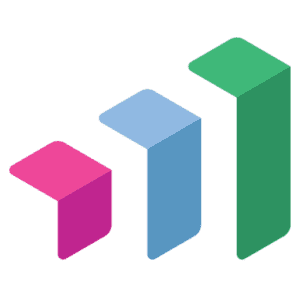Parallax’s Top Takeaways from TSIA World
Whether you build websites and apps, provide digital marketing services, or consult with companies that do so, you’re undoubtedly impacted by ever changing tech industry trends.
The Technology and Services Industry Association (TSIA) hosts annual conferences packed with real-life examples, success stories, and the latest industry research. Parallax co-founder Tom O’Neill and I recently visited TSIA World to check the pulse on the intersection of tech and business. We spent the week talking with other leaders about their challenges, opportunities, and successes, and saw a lot of common dialog among sectors.

For Tom, it was validating to see all of the other new SaaS platforms designed with an integration-first strategy. This approach is foundational to our product development at Parallax – it was great to talk shop with other modern and innovative leaders and compare notes on methods, tactics, and best practices for this trend.
My biggest “aha” moment occurred when I saw that overall, the same challenges arise for companies large and small. From well-established consultancies to brand new shops, we’re all trying to adopt best practices and successfully push our businesses forward. This makes collaborative events like TSIA World all the more valuable as we charge, excitedly, into the future of tech.
In no particular order, read on for Parallax’s top takeaways from TSIA World 2022.

1. Industry saturation and generational differences mean intense talent competition.
It’s a timeless tale: like many industries, technology and service providers encounter a cyclical trend between fragmentation, consolidation, and back again.
TSIA showed that right now, many large organizations are taking tech roles in-house. This pressures digital agencies to compete both for new customers and top talent.
Plus, with younger generations entering and climbing the ranks of the workforce comes new demands for how companies interact with technology. Frictionless interfaces, smooth user experiences, and more personalization are the new norms. Digital services firms need to consider how these higher expectations for the quality and useability of tools will not only change expectations for employees but can create opportunities for the agency to differentiate.
Luckily, we have many insights on attracting and engaging talent to grow your business. Our best advice is to create a culture that nurtures and embraces employee growth. Companies with this mindset are those who can turn a profit while keeping teams from burning out, especially in the wake of the great resignation.
2. User experiences will become more proactive and personalized as AI is adopted.
AI is all the rage. Forward thinkers are reimagining services like customer success by using it to track sentiment, allowing them to more proactively support customers at scale. At this point, AI is more than just a buzzword, but it’s true that many companies don’t yet have the bandwidth or need to implement it in a meaningful way. Maybe you’re already exploring ways AI can be leveraged to solve your clients’ problems. Maybe you’re not quite there. Regardless, one thing is for sure – users expect that the digital experiences they have will become more predictive, more personalized, and more tailored over time.
3. The future of knowledge sharing = creating community.
Technology can’t do everything. (Source: every sci-fi movie, ever.)
No matter how far into the future we get, we know that there will always be a crucial human element to whatever problem technology is solving for us. Understanding this is especially important as we dive into the future of knowledge sharing.
At a professional services organization, successful tool adoption and education are key (in addition to smooth integration). Several TSIA speakers shared smart processes for incentivizing education: they’ve established elaborate certification programs for training and are even facilitating opportunities for these certified people to train colleagues. Creating a user community helps foster human connections and collaboration in ways that technology alone hasn’t been able to achieve – yet.
4. Integrations come first.
In the spirit of leveraging technology to support business strategy, one of the most exciting trends discussed at TSIA was the importance of an integrations-first approach to software. Meaningful, smooth integrations are becoming increasingly important, even expected. (As they should be!) Syncing tools together creates efficiencies, allows for easier access to better data, and frees up time for leaders to focus on what matters most: running their companies.
As tech continues to evolve and digital services companies look for ways to scale effectively, we’re here to provide support. Parallax is a professional services automation solution built for digital services companies who want to expand with purpose. Growing? Sign up for our newsletter to receive industry insights, product news, and more.
